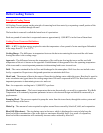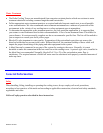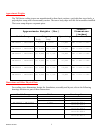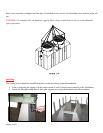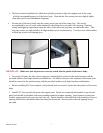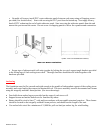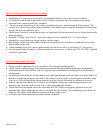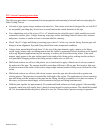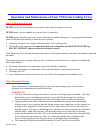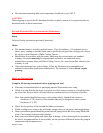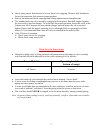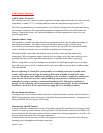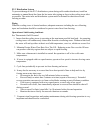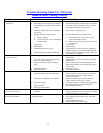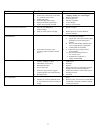
Revised 1-8-2007
10
PVC Solvent Cementing Instructions
The following procedure is recommended for the preparation and cementing of internal and external piping for
Delta Cooling Towers:
• Cut ends of pipe square using a handsaw and miter box. Tube cutters with wheels designed for use with PVC
are acceptable, providing they do not leave a raised bead on the outside diameter of the pipe.
• Use a chamfering tool or file to put a 10° to 15° chamfer on the end of the pipe. Lightly sand the area to be
cemented to remove gloss. Using a clean rag, wipe pipe surface and fitting socket to remove dirt, moisture
and grease. Acetone or similar solvent is recommended for cleaning.
• Check "dry fit" of pipe and fitting by inserting pipe at least 1/3 of the way into the fitting. Position pipe and
fitting to assure alignment. Pipe and fitting should be at same temperature condition.
• Using a clean, natural bristle brush about 1/2 the size of the pipe diameter, apply a primer to the fitting
socket. Apply primer with a scrubbing motion until the surface is penetrated. Primer should never be applied
with a rag. Repeated applications may be necessary to achieve the desired dissolving action. In the same
manner, apply primer to the pipe surface equal to the depth of the fitting socket, making sure the surface is
well penetrated. Reapply primer to the fitting socket to make sure it is still wet.
• While both surfaces are still wet with primer, use a clean brush to apply a liberal coat of solvent cement to
the male end of the pipe. The amount should be more than sufficient to fill any gap. Next apply a light coat
of solvent cement to the inside of the socket, using straight outward strokes to keep excess cement out of the
socket.
• While both surfaces are still wet with solvent cement, insert the pipe into the socket with a quarter-turn
twisting motion. The pipe must be inserted the full length of the socket. The application of solvent cement to
pipe and fitting, and the insertion of the pipe into the fitting, should be completed in less than one minute. If
necessary, two persons should apply solvent cement to the pipe and fitting simultaneously.
• Hold the joint together for approximately 30 seconds until both surfaces are firmly gripped. After assembly,
a properly made joint will usually show a bead of cement around its entire perimeter. This should be brushed
off. It is recommended that the joint be allowed to cure for 24 hours before pressure testing or operation.



